|
|
 |
| |
During the 20th century and the beginning of this century, there have been five miraculous rediscoveries of birds that were believed to be extinct - the most recent in 2003. A new species that was previously unknown was discovered in 1997. All of the survivors are endemic to New Zealand, and all of them except takahe are restricted to a limited range on offshore islands. They are some of the rarest birds in the world, and are all critically endangered, living on the brink of extinction. |
| |
New Zealand storm-petrel Oceanites maorianis
The New Zealand storm-petrel was known only from three museum specimens from the mid-19th century. After it was declared extinct with no recorded sightings for more than 150 years, it was seen in 2003 near the Mercury Islands off the Coromandel Peninsula. There have been several sightings off Little Barrier Island in the Hauraki Gulf, and three birds were banded and fitted with transmitters in 2006 near the Hen and Chickens Islands, but their breeding location has not yet been found. Photo Copyright © Brent Stephenson 2005 www.eco-vista.com
 View larger image View larger image |
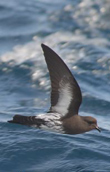 |
|
The taiko, also known as the magenta petrel, is endemic to the Chatham Islands. It was thought to be extinct for more than a hundred years before David Crocket miraculously rediscovered it in 1978. It was nearly another decade before the first burrow was found in 1987. The taiko is one of New Zealand's most critically endangered species, living on the brink of extinction with a population of less than 150 birds.
 See more See more |
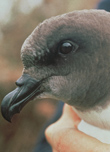 |
Campbell Island snipe Coenocorypha 'Campbell'
A tiny population of Campbell Island snipe was discovered in 1997, during a search for teal on Jacquemart Island, a 19ha inhospitable rock stack 1km off Campbell Island. Jacquemart is New Zealand's most southern piece of land in the Southern Ocean. The first naturalists that landed on Campbell Island in 1840 found no land birds - all of them had been wiped out by rats that got ashore from shipwrecks. After rat eradication on the main island in 2001, snipe have returned naturally, with about 30 birds found during the summer of 2006.
 View full image View full image |
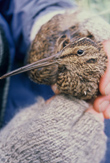 |
|
The Campbell Island teal, which is the world's rarest duck, is one of only four flightless ducks, and is historically endemic to Campbell Island and the tiny islet Dent Island in the subantarctic ocean southeast of the New Zealand mainland. It was declared extinct until 20 teal were discovered on Dent Island in 1975. After a 20-year captive breeding programme, 153 birds were sent back in three translocations from 2004 to 2006 to occupy their former range, and are now breeding on Campbell Island.  See more See more |
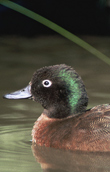
|
|
The takahe is the largest living member of the rail family which is
found throughout the Southern Oceanic islands. Takahe were hunted
until they were rarely found in the 19th century. None were seen after
1900 and it was declared extinct, but amazingly, 200 pairs were found
in a remote region of Fiordland in 1948. The North Island takahe is
extinct, but about 220 of the South Island species continue their dramatic
brink of extinction existence.
 See more See more
 Hear the call of takahe Hear the call of takahe
Needs RealPlayer to run.
INSTALL REALPLAYER |
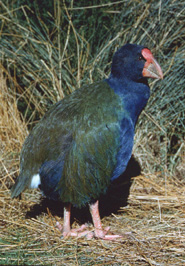 |
|
In 1974 the only known kakapo was an aging male named Jonathon Livingston. Then 18 birds, all male, were found in Fiordland. One female was seen on Resolution Island in 1908, but no other was found for more than 70 years, so the species was effectively extinct. A single female, Mandy, was found on Stewart Island in 1980, but she disappeared. The next big find was 200 birds, but that population was decimated by cats, before 61 survivors were translocated to Maud Island and Codfish Island from 1982 to 1992. The future looks a little better for kakapo since 22 chicks hatched in 2002, bringing the total number up to 86 birds, but it is still one of the world's most critically endangered birds.
 See more See more
 Hear the booming call of male kakapo Hear the booming call of male kakapo |
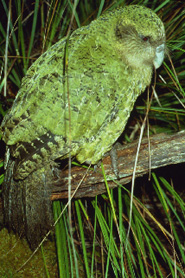 |
| |
 |
| |
|
|


